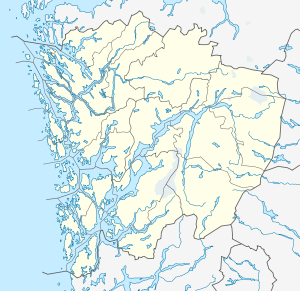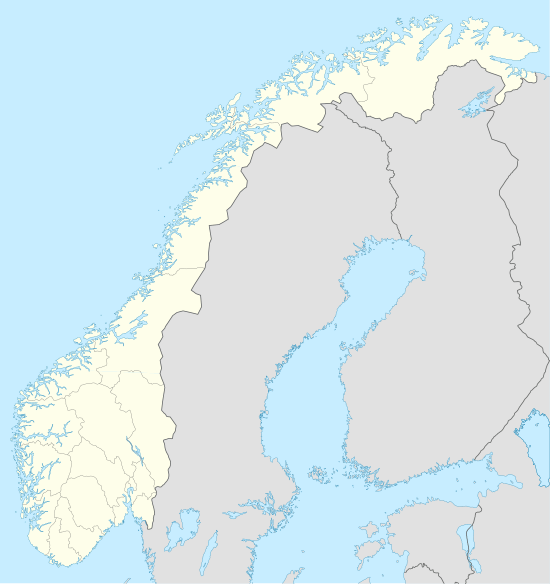Seim, Hordaland
| Seim | |
|---|---|
| Village | |
 Seim Location in Hordaland county  Seim Seim (Norway) | |
| Coordinates: 60°37′14″N 05°16′10″E / 60.62056°N 5.26944°ECoordinates: 60°37′14″N 05°16′10″E / 60.62056°N 5.26944°E | |
| Country | Norway |
| Region | Western Norway |
| County | Hordaland |
| District | Nordhordland |
| Municipality | Lindås |
| Area[1] | |
| • Total | 0.4 km2 (0.2 sq mi) |
| Elevation[2] | 24 m (79 ft) |
| Population (2016)[1] | |
| • Total | 417 |
| • Density | 1,043/km2 (2,700/sq mi) |
| Time zone | UTC+01:00 (CET) |
| • Summer (DST) | UTC+02:00 (CEST) |
| Post Code | 5912 Seim |
Seim is a village in Lindås municipality in Hordaland county, Norway. The village is located at the innermost part of the Lurefjorden, about 10 kilometres (6.2 mi) north of the village of Knarvik and about 12 kilometres (7.5 mi) southeast of the island of Lygra. The village is home to Seim Church (Seim kyrkje) which was built in 1878, and a primary school.[3] The 0.4-square-kilometre (99-acre) village has a population (2016) of 417 which gives the village a population density of 1,043 inhabitants per square kilometre (2,700/sq mi).[1]
History
Harald Fairhair had his royal estates in and around the village of Seim. According to tradition, his son King Håkon the Good is buried at Håkonhaugen in Seim (Håkonshaugen på Seim).[4][5] Since 1997, Seim has been a sight of the Håkonarspelet summer festivals which includes performances of the historical drama Kongen med Gullhjelmen. Written by Johannes Heggland, this series of historic plays centers on the reign of King Håkon the Good which ended with the Battle of Fitjar.[6]
The village of Seim and the surrounding areas going out about 2 to 4 kilometres (1.2 to 2.5 mi) around the village in all directions is the area of the old parish of Seim. This area historically belonged to the prestegjeld of Hosanger. Seim was an exclave of Hosanger, since the rest of Hosanger was located further to the south and east and the prestegjeld of Lindås separated the two. In 1885, Seim was transferred to the new municipality of Alversund. In 1964, Alversund was merged with parts of several other municipalities to form a new, larger municipality of Lindås.[7][8]
References
- 1 2 3 Statistisk sentralbyrå (1 January 2016). "Urban settlements. Population and area, by municipality".
- ↑ "Seim, Lindås" (in Norwegian). yr.no. Retrieved 2014-03-26.
- ↑ "Seim kyrkje". Den norske kirke. Retrieved 2016-01-30.
- ↑ "Håkonshaugen på Seim". Lindås kommune. Retrieved January 30, 2016.
- ↑ "Seim". Billeder fra Lindås. Retrieved January 30, 2016.
- ↑ "Håkon den Gode". Om Fitjar. Retrieved 2016-01-30.
- ↑ Jukvam, Dag (1999). "Historisk oversikt over endringer i kommune- og fylkesinndelingen" (PDF) (in Norwegian). Statistisk sentralbyrå.
- ↑ Store norske leksikon. "Seim – sogn" (in Norwegian). Retrieved 2014-03-26.
External links